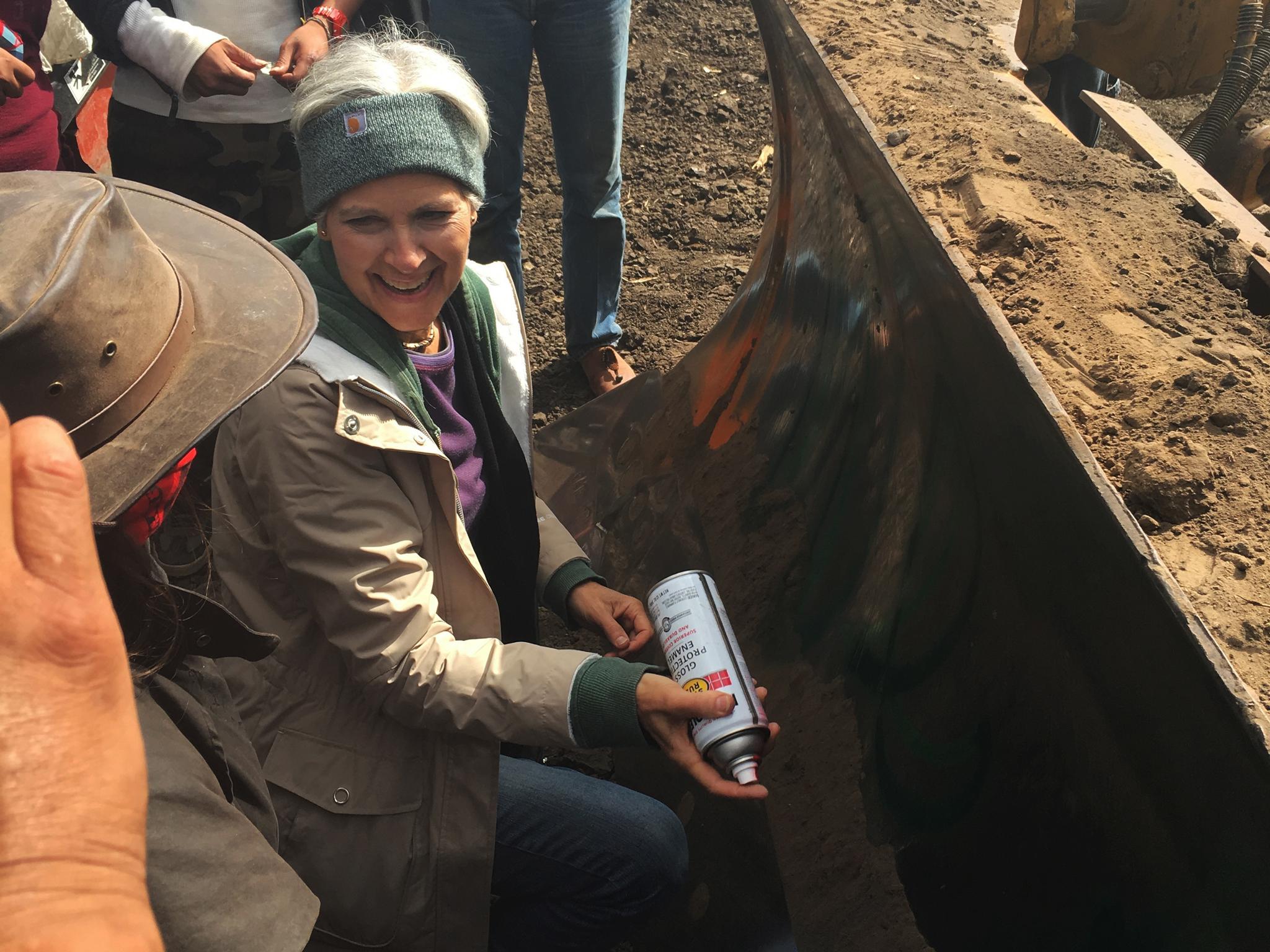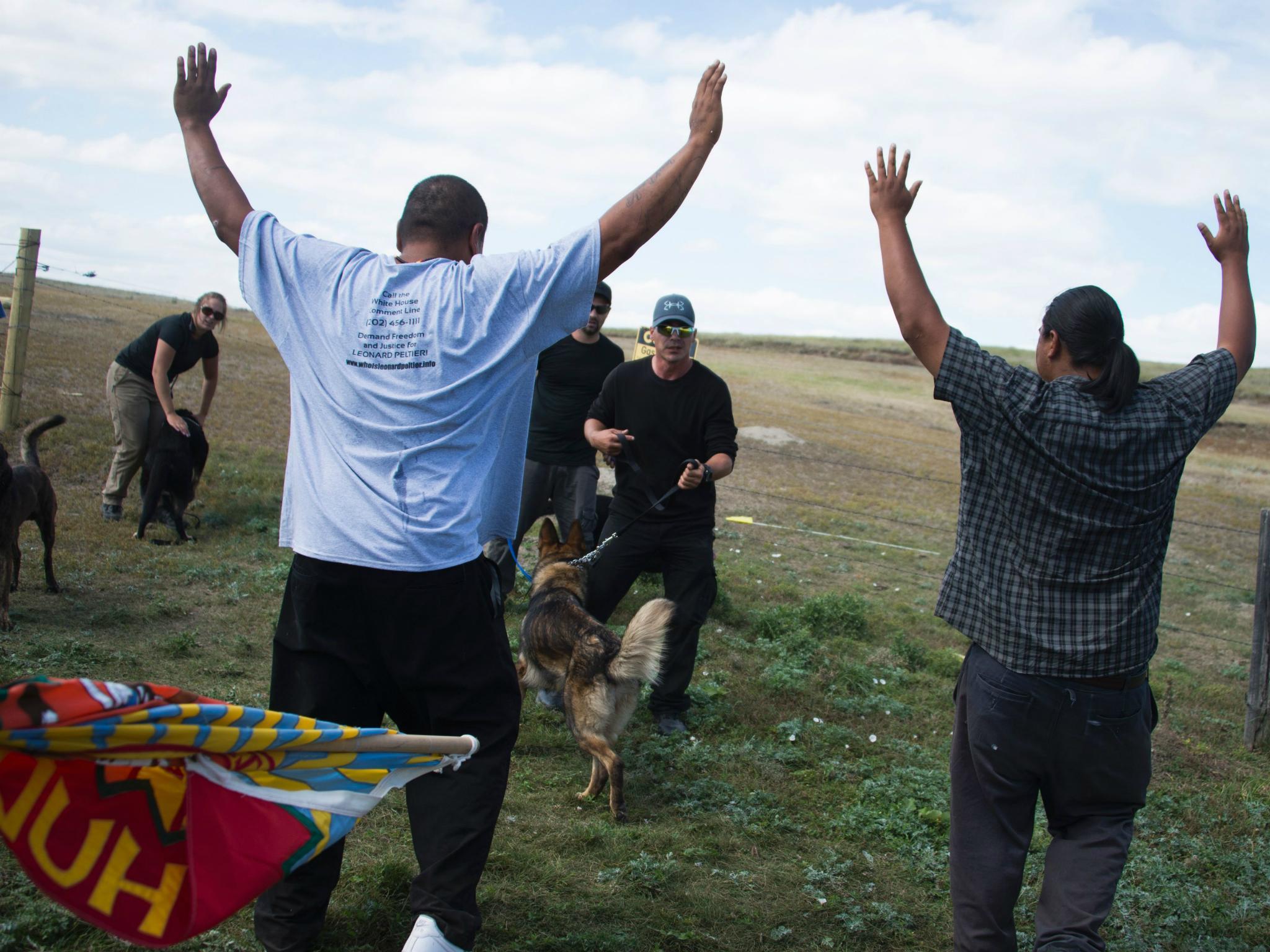Dakota Access Pipeline: Everything you need to know
Standing Rock Sioux leaders said the construction would destroy tribal burial grounds and cultural sites

Your support helps us to tell the story
From reproductive rights to climate change to Big Tech, The Independent is on the ground when the story is developing. Whether it's investigating the financials of Elon Musk's pro-Trump PAC or producing our latest documentary, 'The A Word', which shines a light on the American women fighting for reproductive rights, we know how important it is to parse out the facts from the messaging.
At such a critical moment in US history, we need reporters on the ground. Your donation allows us to keep sending journalists to speak to both sides of the story.
The Independent is trusted by Americans across the entire political spectrum. And unlike many other quality news outlets, we choose not to lock Americans out of our reporting and analysis with paywalls. We believe quality journalism should be available to everyone, paid for by those who can afford it.
Your support makes all the difference.First a federal judge denied the Standing Rock Sioux tribe's request to stop construction of the four-state, $3.8 billion Dakota Access pipeline. Then, within minutes, the US government and military said it would not allow the pipeline to be built on its land Lake Oahe, delivering a huge victory to Native American campaigners.
The lawsuit alleged that the pipeline, which would be placed less than a mile upstream of the tribe's reservation, could impact drinking water for more than 8,000 tribal members and millions who rely on it downstream. Protesters and private security guards recently clashed on private land where the tribe says construction disturbed ancient sacred sites.
Here's a look at the planned pipeline and the tribe's ongoing protest.

Pipeline planned after fiery train derailments
Owned by Dallas-based Energy Transfer Partners, the $3.8 billion, 1,172-mile project would carry nearly a half-million barrels of crude oil daily from North Dakota's oil fields through South Dakota and Iowa to an existing pipeline in Patoka, Illinois, where shippers can access Midwest and Gulf Coast markets. Announced in 2014, supporters said the pipeline would create more markets and reduce truck and oil train traffic — the latter of which has been a growing concern after a spate of fiery derailments of trains carrying North Dakota crude.
Tribes sue over water and sacred sites
The Standing Rock Sioux's lawsuit challenged the US Army Corps of Engineers' decision to grant permits at more than 200 water crossings. Filed on behalf of the tribe by environmental group Earthjustice, the suit says the project violates several federal laws, including the National Historic Preservation Act, and will disturb sacred sites outside the 2.3-million acre reservation. A separate lawsuit filed Thursday by the Yankton Sioux tribe in South Dakota challenges the same thing.
ETP says the pipeline includes safeguards such as leak detection equipment, and workers monitoring the pipeline remotely in Texas could close block valves on it within three minutes if a breach is detected.
Protesters set up camp and a movement grows
Since April, there's been a tribal protest — held mostly by members of the Standing Rock Sioux —at the confluence of the Cannonball and Missouri rivers. It's grown considerably, as they've been joined by other American Indians and other, non-Native Americans from across the country, including celebrities such as “Divergent” actress Shailene Woodley.
Nearly 40 have been arrested as the protest has grown size, including Standing Rock Sioux Tribal Chairman David Archambault II. None of the arrests stemmed from Saturday's confrontation between protesters and construction workers.
Politicians enter the fray

Green Party presidential candidate Jill Stein and running mate Ajamu Baraka have been charged with misdemeanor counts of criminal trespass and criminal mischief stemming from their time at the protest. Stein's campaign spokeswoman acknowledged Stein spray-painted construction equipment Tuesday.
Jack Dalrymple, the governor of North Dakota, has activated the National Guard, with a handful of soldiers providing security at traffic checkpoints, and another 100 on standby to respond to any incidents. Meanwhile, the Great Plains Tribal Chairman's Association has asked US Attorney General Loretta Lynch to send federal monitors to the protest, alleging racial profiling.

Culture Clash
Last weekend, tribal officials said crews bulldozed several sites of “significant cultural and historic value” on private land, which Energy Transfer Partners denies.
It led to Saturday's clash between protesters and private security guards; law enforcement officials said four security guards and two guard dogs were injured, while a tribal spokesman said six people were bitten by the dogs and at least 30 people were pepper-sprayed.
Earlier this week, US District Judge James Boasberg partially granted the tribe's request to temporarily stop work near Lake Oahe to prevent the destruction of more sacred sites, but not on the private land that sparked the protest.
Join our commenting forum
Join thought-provoking conversations, follow other Independent readers and see their replies
Comments